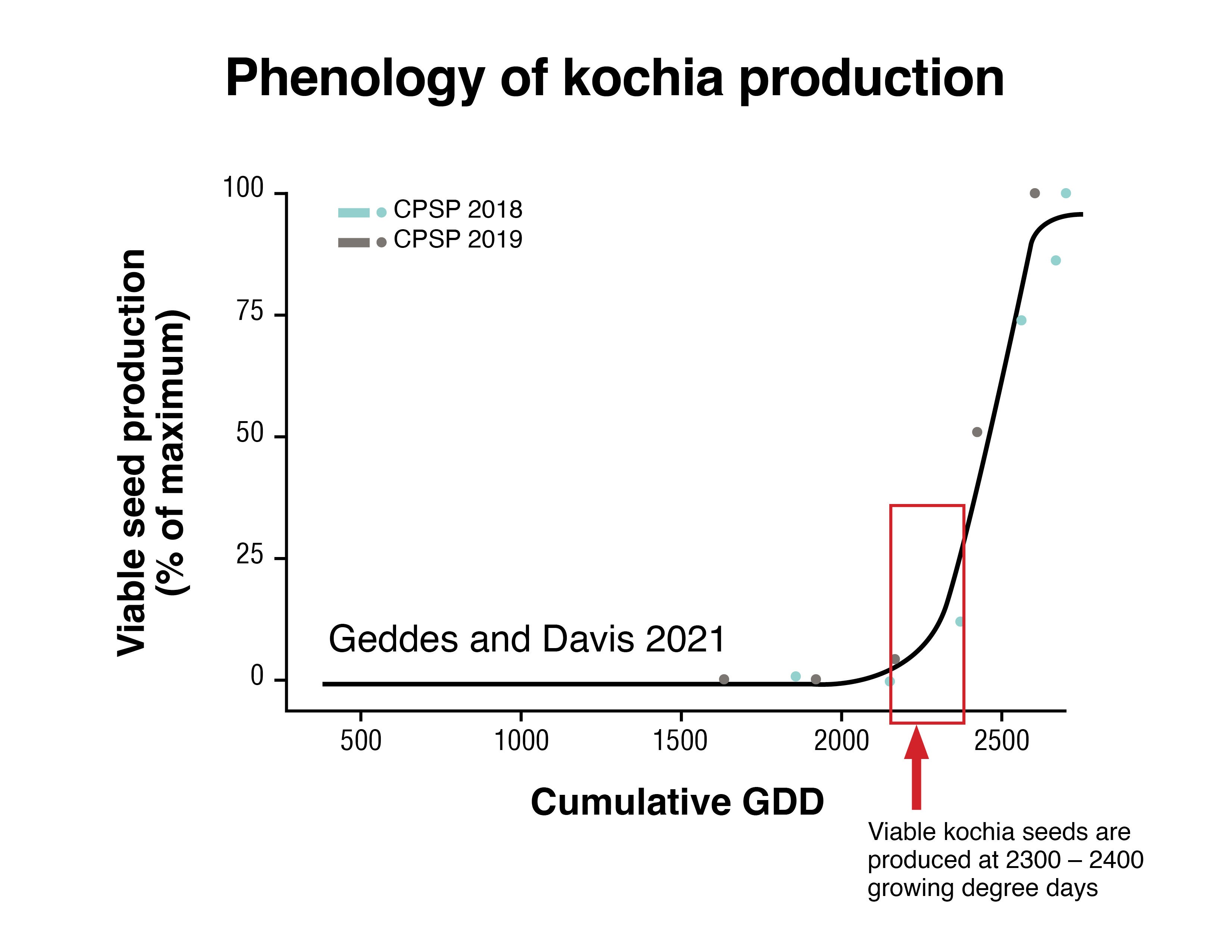Kochia at one time was a problem mainly in southern Alberta. Today, kochia is marching north and could wind up in the Peace River Country when all’s said and done. This growth in kochia’s range is a big concern, but not the only one.
This weed also has a growing resistance to glyphosate, complicating growers’ efforts to kill or contain it.
Previously in this series (link to first article), we explored how the weed can emerge from the ground long before any other plant. During the growing season, it can tolerate heat, drought and saline.
While some weeds might produce 20,000 to 30,000 seeds per plant, the number for kochia is closer to 100,000 over its lifespan. Once it dies and the plant breaks due to wind, kochia can travel up to 1 km through neighbouring fields as a tumbleweed.
Charles Geddes, Weed Scientist at Agriculture and Agri-Food Canada in Lethbridge, Alberta, couldn’t have picked a more intriguing or agronomically important weed to study. He is one of western Canada’s foremost researchers on herbicide-resistant plants, weed ecology, integrated weed management and the dynamics between crops, weeds and the weed seedbank.
Shifting environmental conditions will help kochia spread
In order for kochia to produce viable seeds on the plant, it needs approximately 2300 to 2400 cumulative Growing Degree Days.
Growing Degree Days are calculated by using the mean temperature (maximum temperature + minimum temperature divided by two.) and then subtracting the base temperature, which in this case is zero. GDD = (Tmax + Tmin)/2 - Tbase of each day and adding them together.
Until recent years, this Growing Degree Days factor helped keep kochia mostly confined to the southern Prairies. With climate change, Geddes and his team have seen the number of Growing Degree Days extend well past 2400, farther and farther north.

When will the spread of kochia stop? Not any time soon, according to bio climate modeling of kochia. It is predicted that if the average temperature grows by a few degrees by 2070, kochia will essentially cover North America.
Glyphosate, temperature and kochia
Kochia has a growing resistance to glyphosate, and recent studies have shown that temperature is one factor behind this trend.

As shown in the graph, the amount of glyphosate required to control a susceptible kochia plant increased as the temperature went up.

Geddes has seen this trend first-hand in the Lethbridge area where he works. Crops such as wheat can be set back by 30-plus degree temperatures, during which time kochia progresses.
As Geddes noted during one recent growing season, “We saw 40 or more days of 30-plus degree temperatures.”
Recap
Why is kochia spreading so rapidly?
- It thrives even under 30+ degree Celsius conditions.
- Kochia needs 2300 to 2400 Growing Degree Days for its seed to become viable.
- Growing Degree Days have steadily increased in recent years, allowing for the plant to expand the region where it can grow.
- The warmer the weather, the more glyphosate is needed to control the weed.
